
Great Smoky Mountains National Park (GSMNP) had more than 12 million visitors in 2024, or about 34,000 guests every day. That makes the 522,427-acre swath of mountains, streams, and historic farmland the most popular national park in the country—by far. The next-most-visited national park is Zion, with 4.95 million visitors last year, followed by the Grand Canyon at 4.92 million.
GSMNP is consistently the top park for visitation partly because of its location in southwestern North Carolina and southeastern Tennessee; it’s within 800 miles of 60 percent of America’s population.
And also because it’s beautiful. The forest is lush and green, blanketing the park’s 6,000-foot peaks and obscuring streams, waterfalls, and outcroppings. There are meadows full of elk and rivers stacked with trout, steep slopes, and placid lakes. GSMNP encapsulates the best the Southern Appalachians have to offer.
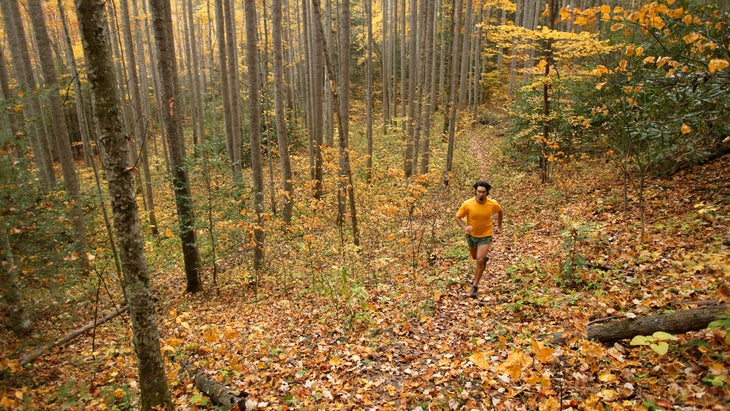
So, yes, people show up. On my recent trip to GSMNP, I sat for a solid hour in bumper-to-bumper traffic on the Foothills Parkway, a scenic two-lane road that cruises the western border of the park. It sucked. But once I got inside the park, I was able to ditch the crowds and hike to a high elevation bald where I had a view of some of the prettiest damn mountains in the United States.
“Given the massive crowds, it could be tempting just to avoid the park altogether,” says Steven Reinhold, a photographer and owner of Appalachian Adventure Company, which works in and around GSMNP. “But you’d miss out on what is arguably the most beautiful and biodiverse landscape in the country.”
The park, he notes, spans from 1,000 to over 6,600 feet in elevation, supporting a variety of different microclimates and ecosystems that range from Southern Appalachian hardwood to Canadian spruce-fir forests, within a few miles of each other.
“The cultural history is diverse, too,” he says, “from the stories and traditions of the Cherokee People to the preserved farms and homesteads of its early European settlers.”
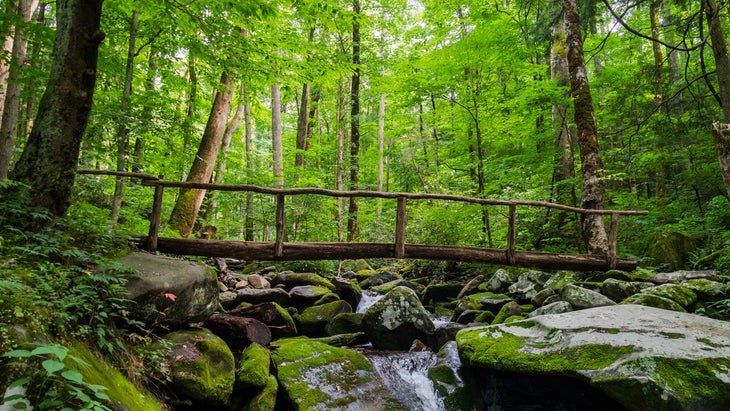
Keep in mind that if you do plan to visit this spring or summer, Western North Carolina is still recovering from Hurricane Helene. While Great Smoky Mountains National Park was largely spared by the brunt of that storm, it’s possible that some roads or trails could be closed for rehabilitation. Be sure to check the status of the park and active closures here.
Living in nearby Asheville, North Carolina, I’ve had a lot of adventures inside GSMNP. Sure, I’ve waited for parking spots, but I’ve also hunted for salamanders with my children, gotten lost off trail (twice), pedaled my bike across the entire park, run into black bears, jumped off waterfalls, climbed historic lookout towers, and paddled pristine lakes. The park might be crowded, but that’s only because it’s awesome.
Here are six reasons why I think Great Smoky Mountains National Park is still worth visiting.
1. The Foliage Is Incredible
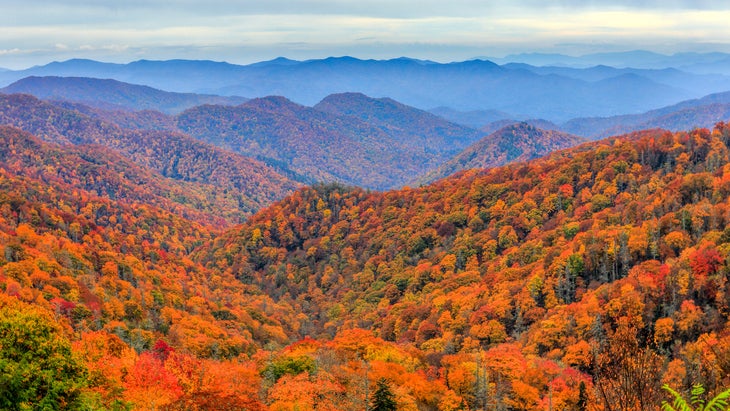
Come fall, the hardwood trees that blanket almost every inch of Great Smoky Mountains National Park transform into a riot of red, orange, yellow, and gold from mid-September to early November. The timing for peak foliage depends on the elevation: the higher the trees, the earlier they turn. To see the most color overall, shoot for mid-October.
Cruising Newfound Gap Road, a 31-mile highway that crosses the heart of the park, will deliver non-stop color to the windows of your car. It’s such a pretty drive, you probably won’t even mind the crowds. If you want color with less traffic, head to the eastern border of the park, where the Blue Ridge Parkway ends and the Heintooga Ridge Road begins.
The first portion of the road is paved and has overlooks similar to what you’ll find on the parkway, with views of the valley below and ridges on the horizon. After nine miles, the pavement turns into one-lane, gravel Heintooga Round Bottom Road, which drops for 14 winding miles into the depths of the park. It’s a slow, one-way trek that puts you in the thick of the golden forest of autumn, passing creeks and small falls before forming a partial loop and arriving in the town of Cherokee, a vibrant gateway community within the 56,600-acre Qualla Boundary, the cultural hub of the Eastern Band of Cherokee.
2. Explore Car-Free Biking
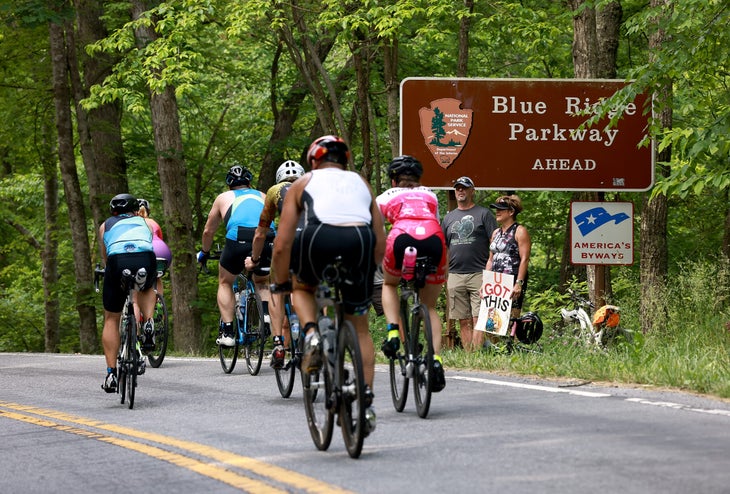
I’ve ridden my bike across the park on Newfound Gap Road, which was beautiful but harrowing, as the car traffic on that highway is nonstop and the drivers seem unaccustomed to sharing the road with cyclists. Fortunately, park management has acknowledged us two-wheelers by creating vehicle-free days inside the popular Cades Cove throughout the busy summer months.
Every Wednesday, from May 7 to September 24, the 11-mile loop through Cades Cove is closed to cars so walkers and cyclists can have the valley to themselves. This makes an easy, family-friendly pedal that delivers pastoral views and opportunities to check out historic structures such as cabins, churches, and school buildings. Among the plentiful hiking opportunities, Abrams Falls Trail is a five-mile out-and-back that follows a stream culminating at the 20-foot Abrams Falls.
3. You Can See—and Hear—the Elk Rut
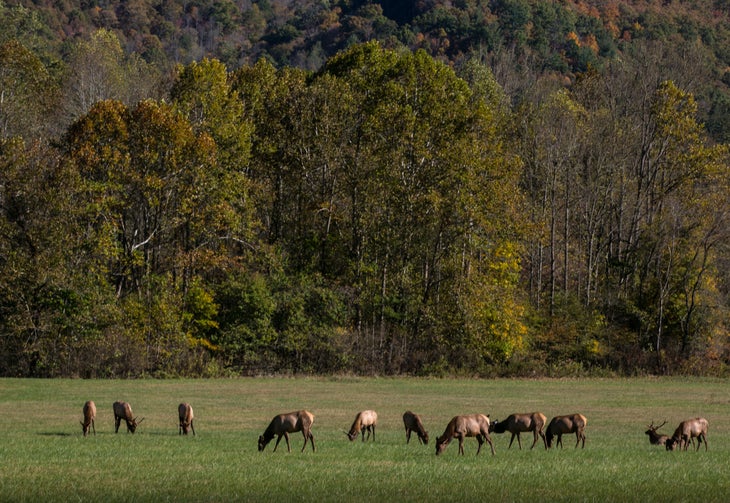
Elk were extirpated from North Carolina back in the late 1700s, but the National Park Service reintroduced the species to GSMNP in 2001, bringing 25 into the park from Kentucky. Almost 25 years later, the elk population is thriving, with numbers reaching almost 250, according to the most recent study.
And they’re huge. The bull elk in the park weigh an average of 600 to 700 pounds and can stand five feet tall at the shoulder. When my children were about seven, my wife and I took them to see the elk before Christmas, and they were convinced the animals were reindeer.
Fall is the best time to see herds, as it’s their mating season, known as the rut, when males bugle and spar for the attention of females. Cataloochee Valley, in the southeastern corner of the park, typically has the largest concentration of the animals, and the big meadow off Cove Creek Road is a good spot to watch and listen for the calls.
I’ve seen the animals throughout the Smokies, from the pastoral Cades Cove on the western side to the high elevations of Balsam Mountain on the eastern edge. The elk are magnificent, but keep your distance and stay quiet so as to not disturb them.
4. The Fireflies Put On a Spectacular Show
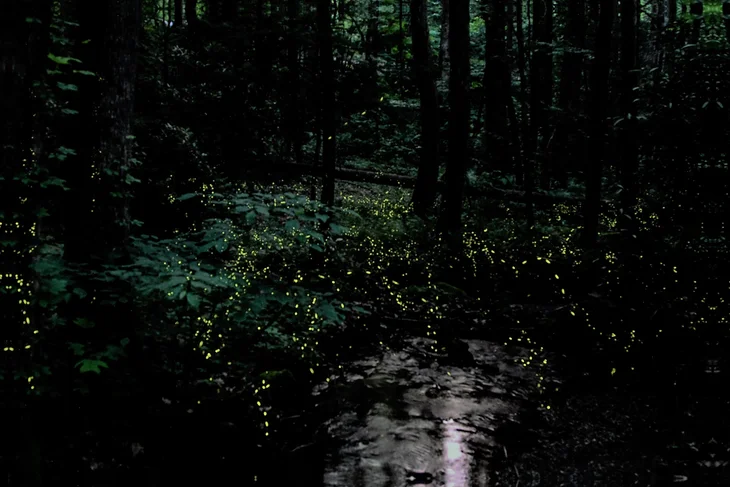
Fireflies are a delight throughout summer in the Southern Appalachians and beyond, but a species of synchronous fireflies found inside the park puts on a choreographed light show every June. The bioluminescent beetles flash in unison, five to eight times in a row, pause for several seconds, then kick in again.
The prime time to catch the show is usually early June. You’ll have to register in the lottery ($1 fee) for a chance to see the splendor. It’s not easy to get a ticket—20,000 people entered the lottery for just 1,240 vehicle passes in 2024—but you can’t win if you don’t play. Or, you can book a guided backpacking trip with Blue Ridge Hiking Company, which covers roughly 13 miles of moderate terrain in the Elkmont area of the park over two days, taking in waterfalls and wildflowers during the day and synchronous fireflies at night ($1,970 for two people).
And the fireflies are just the beginning. The Smokies comprise the most biodiverse unit in the entire national park system, with over 19,000 species of bugs, plants, and animals. The Flamed Tigersnail, which can be found inside the park, emits a bioluminescent orange mucus when it’s feeling threatened. Meanwhile, the hellbender salamander can reach 29 inches long. And did you hear the elk?
5. Winter Is a Great Time to Visit
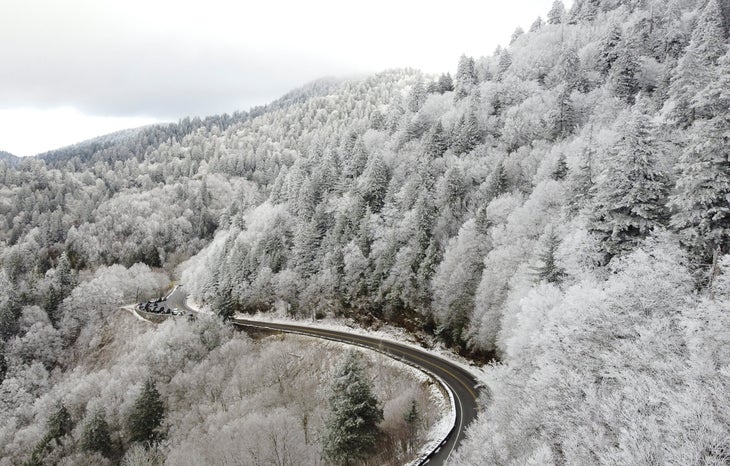
While I’ve met people at Newfound Gap who have driven up from Florida in January so their kids can see snow for the first time, by and large visitation drops significantly in winter, and it’s a great time to explore the park. The trees don’t have leaves, which might sound like a bummer, but their absence reveals long-range views from trails that are usually socked in by the canopy.
Moreover, in my opinion, the best reason to visit GSMNP in the winter is the cross-country skiing; some of the park’s highest roads go unplowed during heavy snowstorms, turning them into XC playgrounds for the hardy. The seven-mile Clingmans Dome Road leads to the highest point in the park, formerly called Clingmans Dome and newly renamed Kuwohi in honor of the Cherokee people who consider the lofty peak sacred. Kuwohi, which collects the lion’s share of powder, is unplowed all season. Check road closures before going—Highway 441, aka Newfound Gap Road, is often closed for plowing, preventing access to Kuwohi during the early part of storms. When the Newfound Gap Road opens, you can ski on Clingmans Dome Road and into Kuwohi.
I also like to watch High On LeConte, the innkeeper’s blog for the backcountry LeConte Lodge, which sits a mile high in elevation, for storm forecasts and snow totals.
6. Yes, You Can Avoid the Crowds. Here’s how.

According to the most recent visitor use study from the park service, Cades Cove is the most frequented spot in the park, with almost half of all peoplee planning to spend time in that area. Kuwohi, in the center of the park, and the Sugarlands Visitor Center on the western edge of the park, also get a lot of traffic, while half of all people also plan to hit the gateway towns of Gatlinburg and Pigeon Forge, according to the same study.
What am I getting at? GSMNP might attract 12 million bodies, but most of them are going to the same places. They hit Gatlinburg, visit Cades Cove, and drive a piece of Newfound Gap Road to see Kuwohi.
That makes it pretty easy to avoid the crowds if you know what you’re doing. I’ve spent entire days inside GSMNP feeling like I had the place to myself.
“There’s not even available parking at popular spots like Cades Cove and Clingmans Dome in the summer and fall,” says Steve Dunkin, the president of Smoky Mountains Hiking Club, who also volunteers for the park inside Cades Cove. “Instead, visit the North Carolina side of the park, or the Cosby and Big Creek areas on the north end of the park, all of which see far less traffic.”
I like hiking to Andrews Bald on the Forney Ridge Trail, a 3.6-mile out-and-back that starts on the popular Clingmans Dome Road, but quickly leaves the crowds behind. Most people tend to stick to the nature trails and scenic walk up the concrete lookout tower, known as Clingmans Dome Tower, at the top of the mountain. You’ll pass through a high-elevation spruce/fir forest before hitting the bald, a grassy area with views deep into the park.
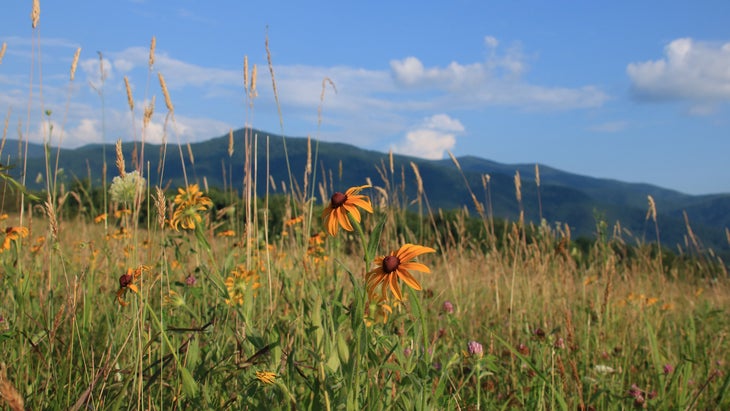
Or you can do something hard. The majority of visitors stick to short trails close to trailheads. I recently hiked to the top of Mount Cammerer, a craggy sub-5,000-foot peak in the northern corner of the park with an incredible view from a historic lookout tower. I had the entire mountaintop to myself. Why? Because getting there required a tough six-mile climb. And it was totally worth it. The view was stellar, taking in the Pigeon River Gorge below. The Cammerer tower is unique in the Southern Appalachians, as it was modeled after the live-in fire towers more common in the Western U.S.
You could also check out Fontana Lake, a 10,000-acre reservoir on the southwestern edge of the park, which offers lonely coves for paddling (look for rope swings!) and harbors isolated trails. I like the 3.5-mile piece of the Appalachian Trail that starts next to the Fontana Dam and climbs steeply to Shuckstack Fire Tower, where you’ll find a broad view of the lake, Smokies, and neighboring Nantahala National Forest.
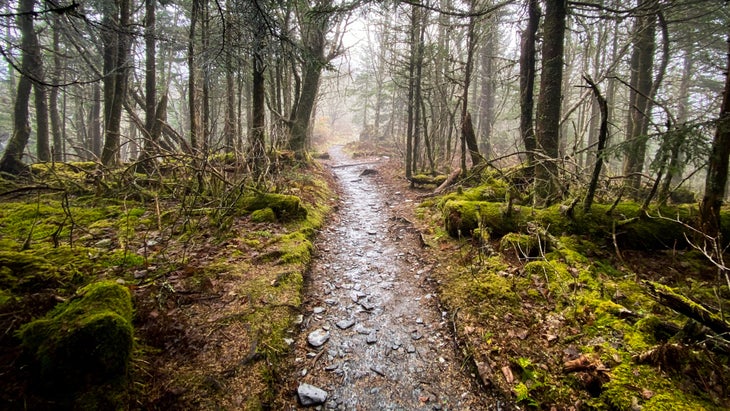
Looking to camp? Try the under-valued Balsam Mountain Campground, a 43-site facility sitting at 5,300 feet in elevation between the towns of Cherokee and Maggie Valley that has availability long after the uber-popular Cataloochee Campground fills up ($30 per night, make reservations up to six months in advance). I just checked and found sites for this upcoming weekend.
And if you have your heart set on hitting Kuwohi or Cades Cove, you can still do it without the crowds. “Go midweek, or time your visit for sunrise,” says the area guide Steven Reinhold. “Hit the park early and you’ll be done with your adventure before most visitors ever reach the trailhead.”
Graham Averill is Outside magazine’s national parks columnist. He’s been visiting Great Smoky Mountains National Park since he was a kid, and writing this article reminded him how much he loves that landscape.

The post This Is the Most Crowded National Park in the Country. You Should Still Go. appeared first on Outside Online.















